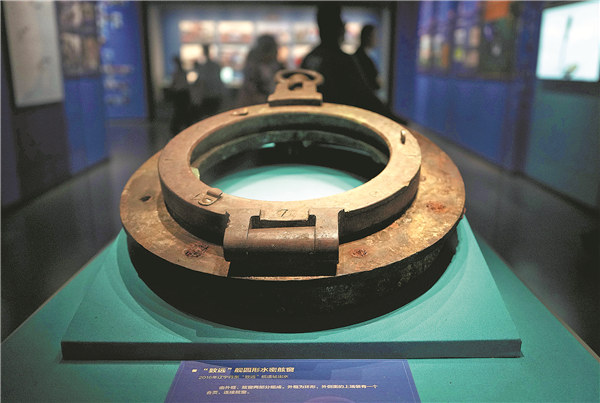

In the past decade, the discovery of seven shipwrecks in the Yellow Sea has yielded a trove of thousands of precious artifacts that bear witness to fallen Chinese sailors, and to a country's strength of spirit. Painstaking study of the Beiyang flagship Dingyuan was probably one of the biggest achievements of the long project.
The Dingyuan was built in Stettin in Germany (today's Szczecin in Poland). It was considered one of the best-equipped battleships of its time.
On Feb 10, 1895, while moored in harbor, the ship was attacked by a Japanese fleet and ran out of ammunition during the Battle of Weihaiwei. It was scuttled by its crew to prevent it from falling into enemy hands.
Following the sinking of the Dingyuan, the Japanese managed to salvage much of the vessel, stripping it of weapons, items of daily use, cables, and coal, taking them to Japan as booty.
"Only the shell of the wreckage remained, settled on the seabed," says Zhou Qiang, a member of the archaeological team from the Shandong Underwater Archaeology Research Center.
Their exploration of the Dingyuan, conducted from 2018 to 2020, revealed a significant cache of small-caliber ammunition rounds. Through the use of sonar equipment, the archaeological team was able to develop a comprehensive understanding of the ship's hull.
The 18.7-ton section lay buried under two to three meters of sediment. In 2020, after nearly two months of meticulous underwater operations, they uncovered the ironclad component, revealing it to be a curved rectangular part of the main gun's protective armor.
In September that year, the team worked with the Guangzhou Salvage Bureau to raise the section from the seabed. On Sept 16, after a full day spent removing sand and securing cables, the remains of the Dingyuan were slowly raised.